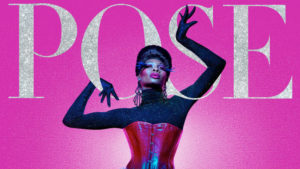By Michael Gill, Co-chair of Riverside’s LGBT employee network Spectrum
Whenever I am asked to write a blog for Black History Month from an LGBT perspective my mind always goes to Marsha P Johnson, the gay activist and drag queen.
However this year, I thought it’d be a great time to talk about one example of how Black culture has influenced the arts.
Over the past year I’ve been watching POSE, a TV series that has been described as ‘ground-breaking’ for two main reasons.
Firstly, it has the largest-ever trans cast in a TV series and secondly one of its leading actors, Billy Porter, was the first openly gay black actor to pick up an ‘outstanding lead actor’ Emmy for his role in the show.
POSE is also remarkable and unique in the way it focuses its stories on the lives of predominantly BAME LGBT characters.
The show, set in the late 80s early 90s, focuses on the New York ballroom scene, an underground LGBT subculture where people would compete for trophies, prizes and glory, judged on dance moves, costumes, appearance and attitude.
The ball scene has so much history for Black LGBT communities. Groups would organise themselves into Houses, complete with a Mother and/or a Father who adopted young homeless LGBT BAME individuals, offering them a place of safety. These Houses were connected by the ballroom culture that allowed them to express themselves through dance and costume. The adoptees were often estranged from their families for being LGBT.
The show focuses on a moment in time when treatment for HIV and AIDS was still in its infancy and many people were dying. The show celebrates the activism of the Black community in raising awareness.
What stands out for me about the show is the fantastic performances from the cast and how they deal with some challenging topics:
- racism within the LGBT community including segregated bars
- HIV testing and adhering to treatment
- the stigma of HIV and AIDS as well as the toll the pandemic had in LGBT communities across the globe
- what ‘passing’ means (the ability of a person to be regarded as a member of an identity group or category different from their own)
- LGBT homelessness in young people.
As well as dealing with these very serious issues there’s some amazing examples of ballroom performance (not the Strictly kind!), the culture that went on to inspire Madonna’s Vogue.
But how much has actually changed since the time the show is set in?
The LGBT community has some way to go to irradiate racism, it still exists and we still have work to do. Black LGBT people still face erasure in LGBT culture – what appeals to me about POSE is that these characters are central to the show.
Great progress has been made in HIV treatment, people aren’t dying the way they were, and there has been a shift in perception of people living with the virus, demonstrated by the support ex-professional rugby player Garth Thomas received from the public when he announced he was HIV positive.
